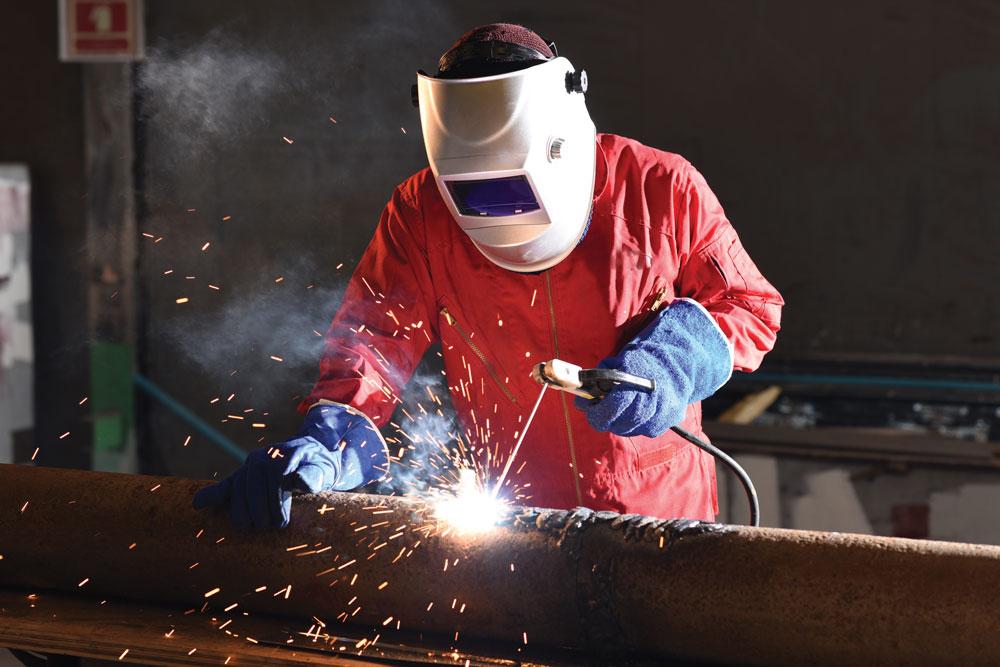Understanding the Process of Welding Inspection Racine for Ideal Outcomes
Understanding the Process of Welding Inspection Racine for Ideal Outcomes
Blog Article
Cutting-edge Techniques to Fillet Weld Assessment and Screening: Enhancing Weld Top Quality and Compliance Specifications
In the world of welding, the quality and stability of fillet welds play a critical function in guaranteeing the structural stability and reliability of numerous commercial elements. With the consistent drive for enhanced efficiency and compliance with rigid criteria, the exploration of cutting-edge approaches to fillet weld assessment and screening has actually become crucial.
Advanced Non-Destructive Screening Techniques
Making use of advanced technologies, progressed non-destructive testing methods play an important role in making certain the integrity and high quality of fillet welds. These approaches, such as phased selection ultrasonic testing (PAUT) and magnetic particle screening (MPT), deal detailed insights into the weld's inner framework without causing any type of damage to the product. PAUT, for example, uses numerous ultrasonic components to check the weld from numerous angles, giving a comprehensive visualization of possible flaws like absence of blend or cracks.
By using these advanced non-destructive testing methods, weld inspectors can accurately assess the top quality of fillet welds, making sure compliance with sector requirements and regulations. The ability to find imperfections early on not just improves weld quality but likewise prevents costly rework or failings in structural honesty, highlighting the value of these innovative screening approaches in welding inspections.
Robotics and Automation in Inspection
The assimilation of robotics and automation has actually changed the evaluation procedure for fillet welds, boosting effectiveness and accuracy in high quality analysis. Robotics use specific control and repeatability in evaluating welds, guaranteeing reliable and consistent outcomes. Automated systems can be configured to follow certain examination courses, guaranteeing thorough protection of welds and lowering the threat of human error.
Robotic evaluation systems geared up with innovative sensing units can spot and gauge weld features with high accuracy, offering thorough data for analysis. These systems can identify flaws such as fractures, absence of blend, and porosity, enabling timely corrective actions to be taken. Additionally, robotics and automation enable real-time data collection and analysis, giving instant responses to operators and promoting fast decision-making processes.
In addition, the usage of robotics and automation in fillet weld evaluation improves general performance by minimizing evaluation times and enhancing examination throughput. By streamlining the assessment process, producers can guarantee weld top quality and conformity requirements are met efficiently, ultimately resulting in set you back savings and improved product top quality.
Utilizing Artificial Intelligence for Evaluation
Expert system plays an essential duty in improving the efficiency and accuracy of evaluation in fillet weld assessment procedures. By using the power of AI, examiners can streamline the analysis of weld top quality and compliance requirements, bring about more specific and trusted results. AI formulas can swiftly refine vast amounts of information from weld assessments, finding defects or disparities that might be testing to identify with the nude eye. This advanced technology allows real-time tracking of weld quality, enabling prompt restorative activities to be taken if any issues are detected.
Furthermore, AI systems can gain from previous evaluation data, consistently boosting their capacity to identify possible issues and inconsistencies in fillet welds. This adaptive discovering capacity enhances the total high quality control process, reducing the probability of human mistake and making certain that welds satisfy the required requirements. By integrating fabricated knowledge right into fillet weld evaluation, sectors can attain higher levels of performance, uniformity, and conformity in their inspection practices.
Portable Tools for On-Site Examination
 Enhancing field assessment effectiveness, the fostering of portable tools changes on-site assessment processes for fillet welds. These tools supply versatility and benefit, allowing useful content examiners to carry out complete assessments in various areas, including remote or challenging settings. Portable tools such as ultrasonic testing tools, magnetic bit examination devices, and digital radiography systems provide real-time data and high-resolution imaging capabilities, allowing fast decision-making and prompt comments on weld high quality.
Enhancing field assessment effectiveness, the fostering of portable tools changes on-site assessment processes for fillet welds. These tools supply versatility and benefit, allowing useful content examiners to carry out complete assessments in various areas, including remote or challenging settings. Portable tools such as ultrasonic testing tools, magnetic bit examination devices, and digital radiography systems provide real-time data and high-resolution imaging capabilities, allowing fast decision-making and prompt comments on weld high quality.One considerable benefit of portable tools is their ability to improve examination procedures, reducing downtime and improving general performance. Examiners can quickly transport these tools to different job sites, eliminating the demand for transporting heavy equipment or components to off-site centers. Furthermore, the mobility of these devices promotes cost-effectiveness by decreasing transportation costs and accelerating inspection timelines.
Moreover, the usage of mobile devices for on-site examination promotes positive top quality control procedures, as assessors can quickly determine and deal with any kind of potential welding defects or inconsistencies. By including these innovative modern technologies right into on-site inspection techniques, welding experts can make certain compliance with sector requirements and enhance weld quality, eventually causing enhanced structural honesty and security in different welding applications.
Integration of Information Management Systems
Having actually maximized on-site inspection procedures through the application of portable devices, the following stage involves the smooth combination of data management systems to further enhance effectiveness and data analysis capabilities in fillet weld evaluation and testing. Welding Inspection Racine. By incorporating data administration systems right into the examination procedure, organizations can enhance data collection, storage, and analysis. This integration enables real-time tracking of weld quality, immediate recognition of flaws, and prompt decision-making to remedy any issues that might emerge throughout the inspection process
Data monitoring systems play a crucial function in centralizing assessment data, assisting in simple gain access to for licensed workers, and making certain information honesty and safety and security. Through the integration of these systems, assessors can create extensive reports, track historic information for trend evaluation, and improve general procedure performance. Moreover, the combination of information monitoring systems enables smooth interaction in between different stakeholders entailed in the evaluation procedure, promoting collaboration and boosting overall quality assurance measures. Eventually, the combination of information administration systems serves to raise the requirements of fillet weld examination and testing, making sure conformity with sector regulations and enhancing weld quality.
Final Thought
Finally, ingenious approaches to fillet weld evaluation and screening have significantly enhanced weld quality and conformity standards. Advanced non-destructive screening techniques, site here robotics, automation, artificial knowledge, mobile tools, and information management systems have reinvented the method weld examinations are conducted. By using these technologies, industries can make certain that welds meet the needed quality standards and laws, inevitably improving total performance and security in welding processes.

By using these advanced non-destructive screening strategies, weld inspectors can properly analyze the high quality of fillet welds, making sure compliance with sector standards and regulations. Portable tools such as ultrasonic screening tools, magnetic bit my explanation inspection devices, and digital radiography systems offer real-time information and high-resolution imaging capacities, enabling quick decision-making and prompt comments on weld quality.
Having maximized on-site examination procedures with the utilization of portable tools, the following phase entails the seamless assimilation of data management systems to better improve efficiency and data evaluation capacities in fillet weld inspection and testing (Welding Inspection Racine). Ultimately, the integration of information management systems serves to elevate the requirements of fillet weld inspection and testing, making sure compliance with industry policies and boosting weld quality
 In verdict, innovative strategies to fillet weld evaluation and screening have actually significantly enhanced weld quality and conformity requirements.
In verdict, innovative strategies to fillet weld evaluation and screening have actually significantly enhanced weld quality and conformity requirements.Report this page